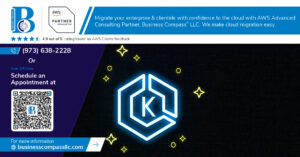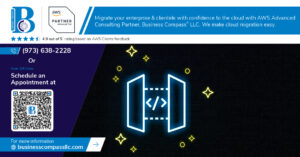Ever wondered why some networks keep running when a connection fails while others crash completely? Your entire business could be hanging in the balance.
Ring topology is the unsung hero of network resilience. While not as flashy as mesh systems or as common as star configurations, ring networks create a circular data path that handles traffic disruptions with surprising elegance.
I’ve seen IT managers double their network uptime after switching to ring topology in critical infrastructure. The circular network design ensures data always finds a path to its destination, even when one connection point fails.
But here’s what most implementers miss about ring networks – their apparent simplicity hides sophisticated traffic management capabilities that can transform performance. And that’s where things get interesting…
Understanding Ring Topology Fundamentals
What Makes Ring Networks Unique
Ring topology isn’t just another network design—it’s a specific approach where each device connects to exactly two other devices, forming a closed loop. Unlike star topologies where everything branches from a central hub, or bus topologies where devices share a single backbone, ring networks create a circular path for data.
The magic happens in how data travels around this circle. Each device acts as a repeater, receiving data and passing it along to the next node until it reaches its destination. No central controller means no single point of failure.
The coolest part? Token passing. Most ring networks use a special “token” that works like a digital baton. Only the device holding this token can transmit data, preventing collisions that plague other network types.
The Evolution of Circular Network Designs
Ring networks have come a long way since their early days. Back in the 1970s, IBM’s Token Ring dominated the landscape, running at a whopping 4 Mbps (laughable now, but revolutionary then).
By the late 1980s, FDDI (Fiber Distributed Data Interface) pushed the boundaries with dual counter-rotating rings for fault tolerance and 100 Mbps speeds over fiber optic cables.
Today’s modern ring implementations include SONET/SDH in telecommunications and resilient packet rings (RPR) in metropolitan area networks. While pure ring topologies aren’t as common in local networks anymore, their influence lives on in hybrid designs.
Key Components of a Ring Topology
Every ring network needs these essential elements:
- Network Interface Cards (NICs): Special ring-compatible hardware for each device
- Repeaters/Amplifiers: Boost signals to prevent degradation
- Token Mechanism: Controls which device can transmit
- Cable Media: Usually fiber optic for enterprise implementations
- Multistation Access Units (MAUs): Connection points similar to hubs
The physical connections matter too. Most enterprise-grade rings use fiber optic cabling for its speed and immunity to electromagnetic interference.
Advantages Over Other Network Topologies
Ring networks shine in specific scenarios where other topologies fall short:
| Advantage | Compared to Star | Compared to Bus |
|---|---|---|
| Predictable performance | Consistent latency vs variable | Guaranteed bandwidth vs contention |
| Fault tolerance | No central point of failure | Continues functioning with single break |
| Scalability | Less cabling needed | Better for longer distances |
| Troubleshooting | Easy fault isolation | Simple to identify issues |
The deterministic nature of token passing makes ring networks particularly good for real-time applications where consistent performance matters more than raw speed.
Industrial control systems, power grid management networks, and some telecommunications backbones still favor ring topologies specifically because they can guarantee delivery times—something packet-switching networks often can’t promise.
The Technical Architecture of Ring Networks
A. Data Transmission Mechanisms
Ring topology networks have a unique way of handling data. Unlike other networks where data just shoots off in all directions, ring networks are more disciplined. Data packets travel in one direction around the circle, hopping from device to device until they reach their destination.
Picture this – your message is like a hot potato being passed around a circle of friends. Each friend can either keep it (if it’s meant for them) or pass it along. That’s how ring networks work at their core.
What makes ring topology special is that every device acts as a repeater, strengthening the signal before passing it on. This means data can travel much farther without degradation compared to other network types.
B. Token Passing Methods
The traffic cop of ring networks is something called a “token.” This special data packet controls who gets to talk and when.
Here’s the deal: only the device holding the token can send data. Once it’s done, it passes the token to the next device. Simple, right?
This approach completely eliminates data collisions (a major headache in other networks). It’s like having a talking stick in a meeting – only the person holding it can speak.
Two popular token passing methods include:
| Method | Description | Best For |
|---|---|---|
| Token Ring | IBM’s implementation using a special token format | Corporate networks requiring predictable performance |
| FDDI | Fiber Distributed Data Interface using dual rings | High-speed backbone networks needing redundancy |
C. Fault Detection Systems
Ring networks shine when it comes to spotting problems. Since data travels in a complete loop, any break in the chain becomes immediately obvious.
Most modern ring topologies include beacon frames – special messages that circulate continuously to check if the ring is intact. When a device doesn’t receive the expected beacon, it knows something’s wrong.
FDDI networks take this up a notch with dual counter-rotating rings. If one path fails, data automatically reroutes to the other ring. Smart, huh?
D. Bandwidth Management Techniques
One of the coolest things about ring networks is how they handle bandwidth. Unlike shared bus networks where everyone fights for the same bandwidth, rings provide each device with dedicated throughput.
The token passing system naturally allocates bandwidth fairly. But advanced ring networks take it further with:
- Priority tokens that let urgent data jump the queue
- Timed token rotation to guarantee every device gets its fair share
- Bandwidth reservation for delay-sensitive applications like video conferencing
This predictable performance makes ring topology perfect for time-sensitive applications.
E. Directional Flow Control
Ring networks typically operate with unidirectional flow – data travels in one consistent direction around the loop. This simplifies routing and reduces complexity.
However, dual-ring configurations like FDDI implement bidirectional capabilities through two separate rings operating in opposite directions. This isn’t just for redundancy – it can effectively double your bandwidth when both rings are operational.
Flow control in ring networks is inherently managed through the token system, preventing any single device from hogging resources. The token rotation time (TRT) can be adjusted to optimize performance based on network load and priorities.
Optimizing Traffic Management in Ring Networks
Load Balancing Strategies
Ring networks can get bogged down when traffic isn’t distributed properly. Think of it like a highway where all cars crowd into one lane while others sit empty. Not ideal, right?
Dual-ring implementations are game-changers here. By creating two counter-rotating paths, traffic flows in both directions simultaneously. When one station gets overwhelmed, packets take the alternative route – cutting travel distance and balancing the load naturally.
Token rotation time (TRT) management is another smart approach. By adjusting how long a station can hold the token, you prevent bandwidth hogs from dominating the network. Heavy users get less token time, lighter users get more.
Typical Load Balancing Methods:
- Counter-rotating dual rings
- Dynamic token allocation
- Traffic prioritization
- Adaptive bandwidth allocation
Priority Routing Implementations
Not all data is created equal. In ring networks, some packets need VIP treatment.
FDDI networks nail this with their priority system. Critical traffic gets flagged for expedited handling – jumping ahead in the processing queue at each station. Real-time applications like video conferencing or emergency communications benefit tremendously.
Token reservation schemes work wonders too. High-priority stations can “book” the next token pass, ensuring their critical data gets transmitted immediately when the token arrives.
Congestion Prevention Techniques
The best traffic jams are the ones that never happen.
Buffer management is crucial here. Each station needs adequate memory to temporarily store packets during heavy traffic periods. When buffers approach capacity, early congestion notifications get sent upstream, allowing sending stations to ease off before gridlock occurs.
Timed-token protocols prevent any single station from monopolizing the network. By setting maximum token-holding times based on current traffic conditions, you ensure fair access even during peak usage.
Segmentation is another powerful strategy – breaking larger rings into smaller connected rings reduces the collision domain and prevents traffic bottlenecks.
Real-World Applications of Ring Topology
A. Telecommunications Infrastructure
Ring topology shines brightest in telecom networks. Why? Because when you’re handling thousands of phone calls or data transfers simultaneously, network reliability isn’t just nice—it’s non-negotiable.
Major telecom providers build fiber optic ring networks that circle entire cities. If a construction crew accidentally cuts through a fiber line (happens more than you’d think), traffic simply reverses direction and continues flowing through the other side of the ring. Your Netflix keeps streaming, and you probably never notice the hiccup.
SONET (Synchronous Optical Network) rings are the workhorses here. They deliver that “five nines” reliability (99.999% uptime) that telecom companies love to brag about.
B. Industrial Control Networks
Factory floors and power plants rely on ring topology when machinery control is critical. Think about it—when you’re controlling robotic arms or monitoring pressure in chemical plants, network failures can mean physical damage or worse.
Industrial rings typically use protocols like EtherNet/IP in a redundant ring configuration. They’re designed to recover from failures in milliseconds, not seconds. That’s the difference between a minor adjustment and a major malfunction.
C. Metropolitan Area Networks
Cities worldwide connect their services through metropolitan area networks (MANs) using ring topologies. Traffic management systems, emergency services, and municipal buildings all stay connected through these urban rings.
Resilient Packet Ring (RPR) technology is the go-to here, handling the unique challenges of city-scale networking—like connecting hospitals that can never go offline.
D. Financial Services Networks
Wall Street doesn’t mess around with network downtime. Financial institutions implement dual counter-rotating rings to ensure transactions never stop—even during network incidents.
Stock exchanges use specialized ring networks where microseconds matter. When millions of dollars move with each transaction, the self-healing properties of ring topology aren’t just convenient—they’re essential.
Troubleshooting Common Ring Network Issues
A. Identifying Single Points of Failure
Ring networks aren’t perfect – they have their weak spots too. The biggest issue? Single points of failure that can bring your whole network crashing down.
Look for these common failure points:
- Active monitors that manage token passing
- Repeaters that boost signals around the ring
- Network interface cards showing intermittent errors
- Connection points where cable meets hardware
Want to find these issues before they cause problems? Run regular network scans using tools like Wireshark or SolarWinds. Set up alerts for unusual traffic patterns or response times that suddenly spike.
B. Resolving Token Loss Problems
Ever had your ring network suddenly grind to a halt? Token loss might be the culprit.
When tokens disappear, data transmission stops completely. Here’s how to fix it:
- Restart the active monitor to regenerate the token
- Check for malfunctioning stations hogging or corrupting tokens
- Verify timing settings on all connected devices
- Update firmware on network interface cards
Token problems happen most often after power fluctuations or when adding new devices. Always run a token passing test after making changes to your ring topology.
C. Addressing Bandwidth Bottlenecks
Ring networks distribute traffic in one direction, which can create serious bottlenecks.
The real-world fix? Implement dual rings for critical systems. FDDI networks use this approach with traffic flowing in opposite directions on each ring.
Other bandwidth solutions:
- Increase token rotation timer for larger file transfers
- Prioritize traffic with QoS settings
- Segment the ring into multiple smaller rings
- Upgrade to higher-speed fiber connections
D. Repairing Physical Cable Breaks
Cable breaks happen. The good news? Ring topologies can actually work around them – if you’ve set things up right.
When fiber or copper connections fail:
- Use cable testers to pinpoint the exact break location
- Activate your automatic bypass switches if installed
- Replace damaged segments with proper termination
- Verify signal strength after repairs
Smart network admins install bypass mechanisms that automatically reroute traffic when breaks occur. Without these, you’ll need manual intervention every time something snaps.
Advanced Ring Topology Configurations
A. Dual Ring Implementations
Ever wondered what happens when your primary ring network fails? That’s where dual ring implementations come in. They’re essentially two rings running side by side, giving you a backup when things go south.
In a dual ring setup, data travels in opposite directions on each ring – one clockwise, one counterclockwise. If one ring breaks, traffic redirects to the other ring automatically. Pretty smart, right?
FDDI networks are the poster child for dual ring topology. They’ve been keeping financial institutions and data centers running smoothly for decades with their 100 Mbps fiber optic rings.
B. Self-Healing Ring Networks
Network downtime costs money – loads of it. Self-healing ring networks are your best defense.
When a cable cuts or a node fails, these networks don’t panic. They instantly reconfigure, rerouting traffic around the damaged section. Think of it like traffic being diverted around a car accident.
Most modern self-healing rings can recover in under 50 milliseconds. That’s faster than you can say “network failure.”
C. Hybrid Ring-Star Architectures
Sometimes you need the best of both worlds. Hybrid ring-star architectures combine the reliability of ring topology with the simplicity of star networks.
In these setups, multiple star networks connect to a central ring backbone. This gives you:
- Easier troubleshooting (thank the star component)
- Better fault tolerance (courtesy of the ring)
- Simpler expansion options
Enterprise environments love this approach because it scales nicely as organizations grow.
D. High-Availability Ring Designs
When failure isn’t an option, high-availability ring designs step up. These aren’t your ordinary ring networks – they’re beefed up with redundant components at every level.
The secret sauce includes:
- Redundant power supplies
- Duplicate network interface cards
- Automatic failover mechanisms
- Hot-swappable components
Financial trading floors, emergency services, and air traffic control systems rely on these designs because every second of downtime could spell disaster.
E. Virtualized Ring Topologies
Physical rings are so last decade. Virtualized ring topologies create logical ring structures on top of physical networks that might not even resemble rings.
The magic happens in software. Virtual rings can span multiple data centers, cross different network types, and adapt on the fly based on traffic patterns.
This approach gives you the benefits of ring topology without the physical constraints of running cables in a circle. It’s particularly useful in cloud environments where your infrastructure might be scattered across multiple regions.
Ring topology networks stand as a testament to effective traffic management through their circular design. By understanding the fundamentals, technical architecture, and optimization techniques, network administrators can harness the full potential of these networks across various real-world applications. The troubleshooting techniques and advanced configurations covered provide the necessary tools to maintain optimal performance even when challenges arise.
Whether you’re implementing a ring network in industrial control systems, metropolitan area networks, or enterprise environments, the principles remain consistent. Start by applying the traffic management strategies discussed, regularly test for vulnerabilities, and gradually explore advanced configurations as your expertise grows. By mastering ring topology, you’ll create resilient, efficient networks that deliver consistent performance when it matters most.



















